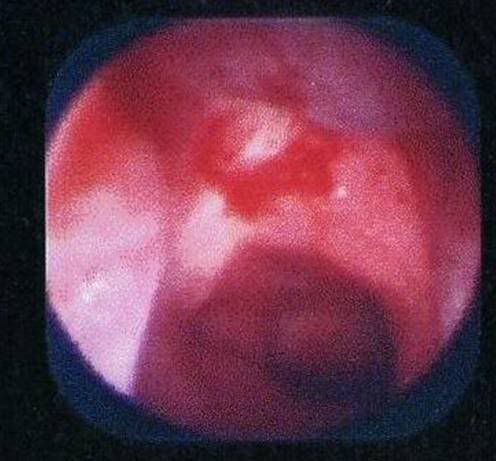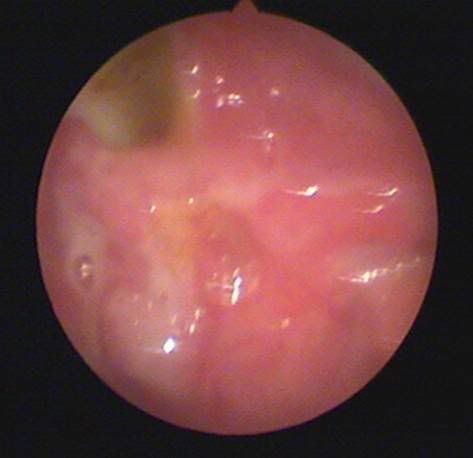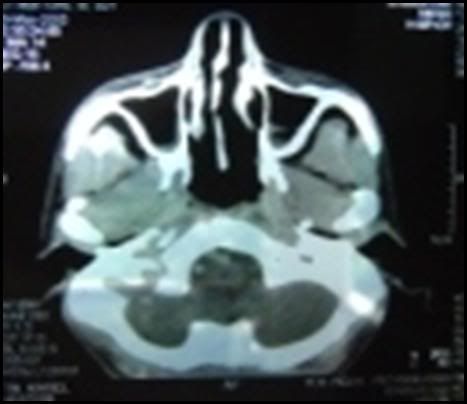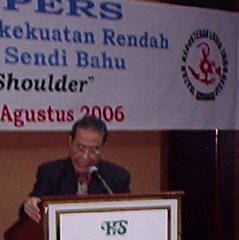Marlinda Adham1, Fikry Hamdan1, Heike Nyst2, H.J.C.M. Sterenborg3, Robert van Veen3, Averdi Roezin1,L.S.Handikin4, I.Bing Tan5
1ENT Department, Faculty of Medicine, University of Indonesia, Dr. Cipto Mangunkusumo Hospital, Jakarta, Indonesia, 2Amsterdam Medisch Centrum, 3Erasmus Medisch Centrum, 4PELNI Hospital, Jakarta,Indonesia, 5Netherland Kanker Institute Antonie van Leeuwenhoek, Amsterdam
OBJECTIVES
• Nasopharyngeal carcinoma (NPC) is endemic in certain parts of Asia, such as Southern China, but occurs sporadically in the Western world
• At Dr. Cipto Mangunkusumo Hospital, Jakarta, there are 90-120 new cases each year
• NPC is sensitive to both radiotherapy and chemotherapy (the first line treatment for NPC is irradiation)
• Several therapeutic modalities have been used in recurrent NPC including external irradiation, brachytherapy, chemotherapy, neck dissection, and combinations of those treatment. Serious side effects are seen following re-irradiation
METHODS
• Foscan (mTHPC, meta-tetrahydroxyphenilchlorin, temoporfin) is a second-generation photosensitizer which is activated by red light (652nm).
• It is a purified synthetic compound with a photophysical efficiency that allows short treatment times (typically 100 to 300 seconds), using small drug dosages
• The period of skin photosensitivity is approximately 2 weeks following injection of Foscan

Light delivery is achieved by using a linear diffuser inserted in a dedicated applicator for controlled light delivery
1 : cylindrical diffuser in shielding tube
2: target area
3: soft palate is shielded
4: variable diffuser length

7 days before PDT
mass on the right side of nasopharynx

20 weeks after PDT
No more necrotic area --> smooth mucosal surface

CT scan before PDT

CT Scan after PDT
BACKGROUND
• Photodynamic therapy is a therapeutic concept based on the ability of a number of photo-sensitizers to concentrate in tumour’s tissue
• Light of a specific wave length illuminating the sensitized cells can then be used to cause selective necrosis of the tumour
• The tumour is readily illuminated by fibreoptic delivery of light energy thus facilitating selective tumour destruction while sparing surrounding tissue
• Squamous cell carcinomas of the head and neck have been shown to respond favorably to PDT
• An induced period of generalized photosensitivity remains a side effect of Photodynamic therapy
 CASE REPORT
CASE REPORT
• We reported a 59-year-old man with recurrent of stage II NPC post-external radiation 50 Gy locoregional, 2 Gy/day, 5 day/week, with booster 20 Gy into tumour bed seven months earlier
• Foscan was injected with dosage 0,1 mg/kgBW, 48 hours before illumination with PDT
CONCLUSION
• Photodynamic therapy could be an effective local treatment modality for recurrent or persistent nasopharyngeal carcinoma
• PDT treatment of recurrent/ persistent NPC has become feasible using a novel nasopharyngeal applicator
• Sequential follow up is necessary and useful for the patient to proof mucosal changes after illumination of photodynamic therapy
* Poster, presented at:
The 16th World Congress of the International Society for Laser Surgery and Medicine
The 1st Congress of the World Federation of Societies for Laser Medicine and Surgery
The 16th Congress of International YAG Laser Society
The 26th Annual Meeting of Japan Society for Laser Surgery and Medicine
Tokyo, Japan, September 7-10, 2005
 Laser has its role in circumcision. If you look for a tool to make a bloodless incision in doing circumcision, laser is the choice!
Laser has its role in circumcision. If you look for a tool to make a bloodless incision in doing circumcision, laser is the choice!









